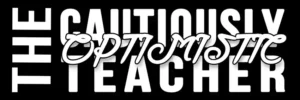Many teachers have experienced the frustration of delivering well-planned lessons only to find that students don’t retain the material later on. After weeks of instruction, test results can be disappointing – not because the content wasn’t taught, but because it never fully transferred to students’ long-term memory (edutopia.org). One major reason for this is a lack of strong memory cues or “pillars” that help anchor new information in the brain. Learning is about encoding it effectively and having ways to retrieve it later. Cognitive research shows that failures in memory often occur at the retrieval stage – when the brain can’t find its way back to the stored information. The key to good retrieval is having effective cues that lead the mind back to what was learned(nobaproject.com). If lessons aren’t providing these cues or connections, students are likely to forget even well-taught material.
Think of memory cues as hooks. When new knowledge is linked to prior knowledge, vivid imagery, or a unique context, it gets attached to a “hook” in the student’s mind. Without such hooks, information may just fade away amid the vast sea of facts the student encounters. In other words, students often struggle to retain curriculum content when it isn’t grounded in meaningful associations. Simply listening to a lecture or reading a textbook chapter might not create strong memory links. As a result, the knowledge sits in short-term memory and dissipates. This is why students can study for a test and still draw a blank during the exam – their brain has no strong retrieval pathway to find the information when needed. Research in cognitive psychology emphasizes that improving memory requires improving how we encode information (for example, by relating it to what one already knows) and ensuring there are cues to retrieve it later (nobaproject.com). In practical terms, this means that to help students remember, teachers need to provide context, connections, and cues when introducing new material.

One powerful strategy to create those much-needed memory cues is using priming activities at the start of a lesson. In psychology, priming refers to exposing someone to a stimulus that influences how they respond to a later, related stimulus (smartick.com). In the classroom, a priming mini-lesson is a short (around 5 minutes) activity or experience presented before the main lesson content. Its purpose is to activate relevant knowledge and mental associations in students’ minds, essentially “warming up” the brain to better absorb and retain new information (smartick.com). By briefly engaging with key concepts, themes, or emotions related to the day’s topic, students build a mental framework that makes it easier to encode and retrieve the lesson material later.
Priming improves retention because it primes the brain’s neural networks for what’s to come. When learners are exposed to relevant concepts prior to a learning task, the associated cognitive networks are activated, making it easier to encode and later retrieve the related information (smartick.com). In simpler terms, a well-crafted priming activity tells the brain, “This information is important – pay attention to it and hang onto it.” For example, discussing a few key vocabulary terms and the overall topic before a reading assignment gives students a mental outline of what to expect(readingrockets.org). This advance organizer acts as a scaffold, helping students focus on the salient information and engage in deeper processing of the material(readingrockets.org). Instead of diving in cold, they have a sense of context, which means they’re less likely to get lost and more likely to remember the content.
There is research evidence backing the effectiveness of short priming interventions. In one study, a simple 5-minute cognitive warm-up activity (in this case, a quick session of a brain-training video game) before a math lesson led to improved performance in the subsequent learning task (smartick.com). The students who received this brief “mental warm-up” were more prepared and absorbed the material more effectively than those who did not. Priming can take many forms – it might be a preview quiz, a thought-provoking question, or a brief interactive challenge. Importantly, even retrieval practice can serve as a priming tool. Prompting students to recall prior knowledge at the start of a lesson (for instance, “What do we remember about last week’s topic that might connect to today’s lesson?”) not only activates relevant schemas in their memory (facultyfocus.com) but also strengthens that prior knowledge through recall. Studies have shown that deliberately retrieving information from memory increases long-term retention more than passive review – essentially “priming” the mind for new learning and better recall later (facultyfocus.com).
In essence, priming mini-lessons create strong mental associations – or memory pillars – that the main lesson content can latch onto. They serve as signposts in the brain. Later on, when students try to remember the lesson, those signposts are there to guide them. Rather than trying to recall a standalone fact, they can think back to the distinctive activity or cue from the lesson’s start, which will lead them to the information. This approach directly addresses the earlier problem of absent retrieval cues. By design, priming provides the cues up front. As a bonus, priming also tends to increase students’ attention and motivation; a quick, engaging activity at the beginning of class captures interest, signaling that today’s lesson is going to be interesting and relevant (smartick.com). Engaged attention is the first step to encoding information in memory. When students are curious or excited, their brains are more primed to learn (quite literally).
Designing Engaging, Unique, and Memorable 5-Minute Priming Lessons
To serve as effective memory primers, these mini-lessons must be carefully designed. A random activity won’t do – the magic lies in the connection between the priming activity and the lesson content, and in how engaging and distinctive the activity is. Here are some guidelines for crafting 5-minute priming mini-lessons that pack a punch:
Keep it short and focused: Aim for about five minutes or less. The priming activity should be a quick spark, not a full lesson on its own. Its job is to set the stage for learning, so focus on one key idea or stimulus that relates to the day’s material. For example, a single provocative question or a brief demonstration is plenty. Keeping it concise ensures it’s punchy and memorable without eating into instructional time.
Tie it directly to the lesson objective: The best priming activities have a clear connection to what will be taught. They might introduce a core concept in simple terms, foreshadow a key theme, or present a problem that the lesson will solve. This gives students a framework for the new material (readingrockets.org). For instance, if the lesson is about the water cycle, a priming activity could be observing a cup of ice sweating on a table and asking students why water is pooling around it. This naturally leads into the day’s science topic. By the time you formally introduce the water cycle, students are already thinking about evaporation and condensation. In short, make the priming task a bridge to the new content.
Activate prior knowledge: One reason priming works is that it activates existing memory networks (facultyfocus.com). Design your mini-lesson to prompt students to recall something they already know that’s related to the new topic. This could be a quick review question, a poll, or a short discussion where students share experiences. Activating what’s already in their minds provides a “hook” for attaching the new material. It helps students see continuity in their learning and creates a sturdy foundation (a memory pillar) for the new content. Even a brief think-pair-share where students brainstorm what they know about today’s topic can fulfill this priming function.
Use novelty or surprise: Our brains are wired to notice the unusual. An unexpected or unique activity will stand out in students’ memories (thanks to the distinctiveness effect, where unusual events are better remembered). If every class normally starts with a review quiz, try starting today with a curious riddle or a strange image related to the lesson. If you’re teaching physics and suddenly pull out a rubber chicken to demonstrate a concept, students will perk up! That novelty not only grabs attention, but it also gives that day’s lesson a distinctive marker in memory. When students think back, that odd or funny moment will pop up, bringing the lesson content with it. In cognitive terms, distinct and novel cues tend to be more memorable and effective retrieval cues than mundane ones (nobaproject.com). So don’t be afraid to be creative and a little unpredictable with your priming hooks.
Evoke emotion and curiosity: Emotion is one of the most potent drivers of memory. Psychological research has found that people remember emotionally charged experiences more vividly and for longer periods (inc.com). In the classroom, this means if your 5-minute primer can make students feel something – amusement, empathy, excitement, even mild confusion or suspense – it can help stamp the coming lesson into their long-term memory. When information is linked to an emotional context, it activates more parts of the brain (like the amygdala, which processes emotion, alongside the hippocampus for memory) and essentially tells the brain “store this, it’s important” (inc.com). You might use a quick personal story, a surprising fact, a short video clip, or a relatable scenario to spark an emotional reaction. For example, a history teacher might begin a lesson on World War I by briefly sharing a moving diary entry from a soldier – students feel the human side of the history, creating an emotional connection to the facts that will follow. Emotions release hormones that can strengthen memory formation (etu.co), so an emotionally resonant mini-lesson can become a powerful mnemonic anchor.
Make it interactive and student-centered: Engagement is highest when students are actively involved rather than passively listening. Design priming activities that get students doing or thinking. This could be a quick game, a poll where they must take a stance, a short role-play, or even a physical movement. For example, in an English class, you might present two lines of poetry and have students vote on which is more mood-setting – a simple activity that gets them thinking about tone (priming them for a poetry analysis lesson). Interaction not only increases attention (thus aiding encoding), but it also gives students a sense of ownership and personal connection to the material. Active involvement is known to boost retention because the learners are processing information more deeply as they participate, rather than just hearing it.
By following these design principles, your priming mini-lessons will be engaging, unique, and memorable, just as needed. The goal is for students to find the activity fun or intriguing in the moment and to have it serve as a lasting mental reference point for the content. An ideal priming exercise will have students thinking, “That was cool – I wonder what that’s about?” and then later, “Oh, I remember this concept because we did that cool thing.” When you achieve that, you’ve created a powerful learning experience that sticks.
Examples of Priming Mini-Lessons Across Subjects
To illustrate how 5-minute priming mini-lessons can work in practice, let’s look at a few examples in different subject areas. These examples are adaptable – they can be scaled up or down for various grade levels (a high school teacher might add more complexity, while an elementary teacher keeps it very simple and visual). The common thread is that each mini-lesson is brief, engaging, and clearly connected to the day’s learning goal:
Math (High School Algebra): To prime a lesson on solving quadratic equations, the teacher starts with a quick “Will It Hit the Target?” challenge. They show a 30-second video of a basketball shot arching through the air and ask students to predict if it will go in, based on the arc. Students eagerly guess. This fun scenario introduces the idea of parabolas in real life. The teacher then reveals that today they’ll learn how to predict such arcs using quadratic equations. The excitement of the prediction game becomes a mental cue for the quadratic formula – later, when students think about parabolas or the formula, they’ll recall the basketball shot. (For younger students learning basic algebra, a simpler priming could be a quick number puzzle or magic trick with an equation, sparking curiosity about how it works.)
Science (Middle School Biology): Before a lesson on plant biology and phototropism (how plants grow toward light), the teacher darkens the room and places a single potted plant under a lamp on one side. Over the previous day, the plant has visibly bent toward the lamp. For five minutes, students examine the plant and discuss: “Why do you think it’s leaning that way?” They might share personal observations of houseplants or gardens. This mini-investigation primes their curiosity and activates any prior knowledge about plants needing light. When the teacher then introduces the concept of phototropism and auxins, students already have a concrete example in mind. The image of that bent plant under the lamp serves as a memorable anchor for understanding the science behind it.
English Literature (High School): In an English class reading a Shakespeare play or a classic novel, a teacher might begin with a short, dramatic reading or a hypothetical scenario to stir emotion. For example, before delving into Romeo and Juliet, the teacher asks students to imagine a scenario: “Think of a time you were forbidden from doing something you really cared about – how did it make you feel?” A couple of students share brief stories or feelings (e.g. frustration, determination, sadness). This emotional priming taps into the themes of forbidden love and conflict with authority. As the class reads the play, the initial personal reflections create empathy for the characters. Students remember the discussion and link it to the plot; the emotional resonance of their own experiences becomes a retrieval cue for the literature analysis. (In a middle school setting, a teacher might prime a novel study by playing a quick game where students choose sides on a moral dilemma related to the book’s theme, generating excitement and personal investment in the story to come.)
History (Elementary or High School Social Studies): To introduce a history lesson on, say, the American Revolutionary War, a teacher can use a short role-play. They hand out index cards to a few students designating them as “colonists” and one as a “tax collector.” For two minutes, the tax collector goes around collecting a token (like a sticker or pencil) from each colonist, without explanation, causing a bit of protest and confusion. After this quick simulation, the teacher asks, “How did that make you feel? What do you think it was like to be taxed without having a say?” Students express their indignation – a real emotional reaction. Now they are primed to learn about “taxation without representation” and the causes of the Revolutionary War. The brief emotional experience of unfairness becomes a pillar that supports their understanding of the historical events. Even weeks later, recalling that feeling of the mock tax will help students remember why the colonists rebelled. (For younger kids, this can be simplified with a story or a puppet show illustrating unfair rules, to achieve a similar effect of emotional engagement.)
These examples show how versatile priming mini-lessons can be. Whether it’s a quick experiment, a story, a puzzle, or a role-playing scenario, the idea is to create a memorable moment that connects to your lesson’s content. Different subjects lend themselves to different types of hooks, but in all cases, the priming activity should leave students eager to learn more and with a mental “tag” that will later help them retrieve what they learned.

Helping Students Link the Priming Activity to the Lesson
For priming to truly pay off in long-term memory retention, students should be consciously aware of the connection between the opening activity and the lesson content. Often, the link may be clear to the teacher but not immediately obvious to the students. A crucial final step is to make the retrieval cue explicit: teach students how to use the priming mini-lesson as a memory hook for the material. This can be a quick, student-facing explanation or activity right after the main lesson, and it only takes a minute or two.
For example, you might close the lesson by revisiting the priming activity with the class: “Remember that little game we played at the start of class? Let’s talk about how it ties into what we learned today.” Have students briefly discuss or journal about the connection. By articulating the link themselves, they reinforce the neural association between the cue and the content. You could even turn this into a routine: after each priming mini-lesson and lesson, ask one or two students to explain how the opener helped them understand or remember the topic. This reflection not only consolidates today’s learning, but it also trains students in the habit of making mental links – a valuable study skill.
It can also help to coach students on using the cue when studying or recalling information. You might say something like:
“When you go back to review this chapter, picture that plant we saw bending toward the light. Use that image to jog your memory about why plants grow the way they do. Our brains remember pictures and experiences really well, so if you’re trying to remember the details, think back to that plant demonstration and what we talked about.”
Encourage students to mentally bookmark the lesson with the priming activity. The next time they’re trying to recall the concept, they can start by recalling the priming event, and that will lead them to the related knowledge (thanks to encoding specificity – the idea that memory is improved when the context at recall matches the context at learning (nobaproject.com). Essentially, you are giving students a retrieval strategy: use the cue to find the content.
Some teachers even involve students in creating the memory link. For instance, you could have the class come up with a funny slogan or a simple drawing that ties the priming activity to the lesson’s main point. In a chemistry class that started with a quick vinegar-and-baking-soda volcano to prime a reaction types lesson, students might coin the phrase “Volcano first, info bursts!” as a playful reminder that the explosive demo (volcano) relates to chemical reactions (info). It sounds silly, but that very silliness makes it stick in the brain.
By explicitly teaching this linking step, we ensure that the priming activity isn’t just a one-off gimmick, but a durable memory aid. Students learn why we did that weird or fun thing at the start of class and how it can help them remember the material. Over time, they may start making these connections on their own, turning anything memorable into a mental cue for learning. We’re not only helping them remember today’s lesson, but also equipping them with a metacognitive strategy for the future.
Conclusion
Incorporating 5-minute priming mini-lessons is a simple yet powerful tweak to your teaching practice that can significantly boost students’ memory retention. By addressing the root causes of forgetting – weak encoding and lack of retrieval cues – priming activities give your lessons “staying power.” They excite interest, awaken prior knowledge, and embed learning in a context that students find easier to recall later. Research and classroom experience alike support the idea that when students are prepared and emotionally engaged from the start, they remember more (smartick.com) (inc.com). Whether you teach high school history or elementary math, priming mini-lessons can be adapted to fit your content and learners. Start small: add a thoughtful 5-minute hook at the beginning of your next unit. Over time, you’ll likely find your students not only more engaged at the start of class, but also more successful in recalling and applying what they’ve learned down the road. In the busy life of a teacher, these few minutes of priming can save countless minutes of reteaching and reviewing – a payoff that benefits everyone. By making learning stick the first time, we empower our students to build on a strong foundation, lesson after lesson, year after year. And perhaps best of all, we help them experience that gratifying feeling of “I remember this!”, which boosts confidence and fuels a love of learning. So go ahead and give priming mini-lessons a try – a small investment of time for a big gain in memory and mastery.

